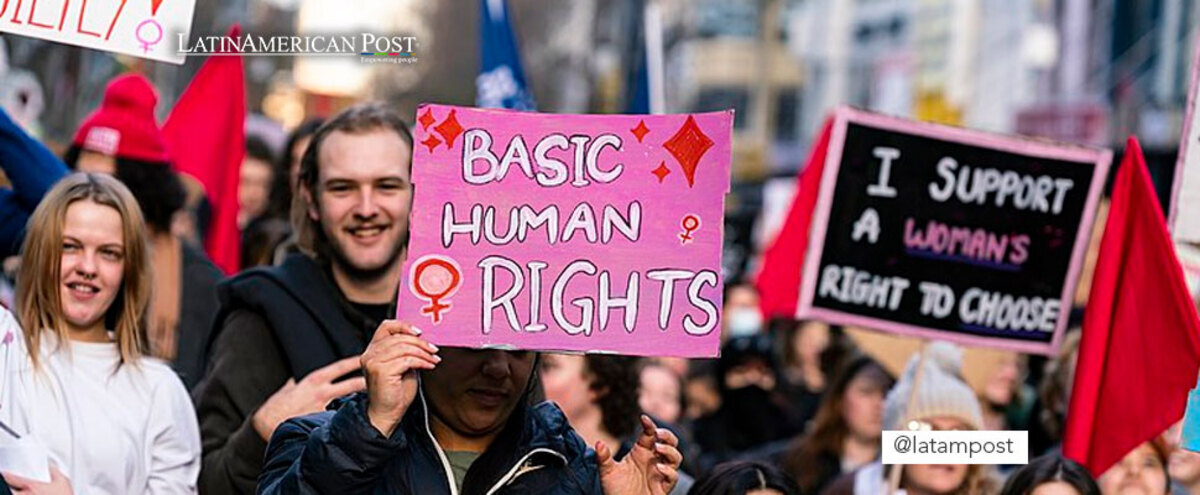“Roe Vs Wade”: The Abortion Ban is a Risk to Public Health
The Ruling of the US Supreme Court Against Abortion Generates Concern in Much of the Scientific Community. A Series of Questions About Public Health are Being Opened.

Photo: Flickr-Matt Hrkac
LatinAmerican Post | María Fernanda Ramírez Ramos
Escucha este artículo
Leer en español: “Roe Vs Wade”: la prohibición del aborto es un riesgo para la salud pública
After the decision made by the Supreme Court, on June 24, which eliminates the constitutional right to abortion and gives power to each state to decide, it is expected that the most conservative states will begin to prohibit or penalize it. Calculations indicate that this situation could occur in at least half of the 50 states of the Union. At the moment, 25 of them have restrictions on abortion, according to monitoring information from the Guttmacher Institute. The most restrictive states are Texas, Oklahoma, Arkansas, Alabama, Missouri, and South Dakota. However, it is expected that others will begin to increase their restrictions or ban it completely.
It is necessary to remember that the sentence "Roe v. Wade" protected abortion at the national level until the fetus could live outside the womb, which is usually 22 to 24 weeks.
What do the experts say?
Beyond the ideological or ethical debate surrounding abortion, undoubtedly both its approval and its prohibition generate challenges in the health system. In this sense, several studies, with scientific evidence, indicate that the prohibition of abortion has a negative impact on public health.
In fact, the director of the World Health Organization WHO stated regarding the case of "Roe vs. Wade" that: "All women should be able to decide about their bodies and health. Safe abortion is part of health care." This The doctor assured, in the middle of a press conference, that not having access to safe abortion does not stop women from aborting, but exposes them to ending up in hands in which factors such as infections could lead to death.
In this regard, the WHO informs, in its latest updated report in March of this year, that around 25 million unsafe abortions are committed each year in the world. Of these, some 39,000 end in the death of the woman and thousands of others in hospitalizations. However, it also ensures that following the security practices recommended by the same organization, these catastrophic consequences could be prevented.
We recommend you read: The Supreme Court now attacks the fight against climate change
The Association of American Medical Colleges (AAMC) said in a press release that the Court's decision will: "increase health inequities across the country, ultimately putting the lives of women, at the very time we should be redoubling our commitment to evidence-based, patient-centered care that promotes better health for all people and communities." She also indicated that medical students, in their gynecology and obstetrics internships, need to receive training on the provision of abortions, which is sometimes related to other health issues. However, it also points out the importance that residents may object to performing induced abortions.
On the other hand, the National Academy of Sciences and the National Academy of Medicine also rejected the decision and stated that: "The United States already has one of the highest maternal mortality rates of any developed country, especially for women of color, and state laws and regulations that limit or affect abortion create further barriers to safe and effective reproductive care." They also assured that they will commit to mobilizing the scientific, medical and health care community to identify actions that can mitigate the possible negative effects of the decision.
Nature Magazine has also made a series of publications that collect information from various investigations and point out the concerns after the Supreme Court ruling. Among his conclusions, it points out that it can push people who are denied an abortion further into poverty, especially those of color and those who are already poor. It also points out the complication of having to travel an average of 441 kilometers to access abortion services for many people. It further indicates that "people may attempt to terminate their pregnancies without clinical supervision, and those with pregnancy complications or adverse pregnancy outcomes may be vulnerable to legal oversight and criminal prosecution". In this way, complications could also arise for pregnancies with special conditions or those that end in spontaneous abortions.
Another study, led by Dr. Diana Greene Foster, a reproductive health researcher at the University of California, followed a group of women who aborted and a group who were denied an abortion for several years. The results showed that "women who were denied an abortion were more likely than women who had an abortion to experience economic hardship and insecurity for years. Laws that restrict access to abortion can result in worse economic outcomes for women".
In conclusion, questions about the abortion ban point to the possibility of increasing inequality, since it will affect the most vulnerable groups; pregnant people are exposed to illegal abortion practices, which affect their mental and physical health; do not receive adequate care; cases of miscarriage are stigmatized, or even penalized, or people have to make difficult journeys. These same reasons could generate an increase in the expenses of the health system. Likewise, it generates barriers in care and in the doctor-patient relationship, since there could also be criminal responsibilities for health professionals.




